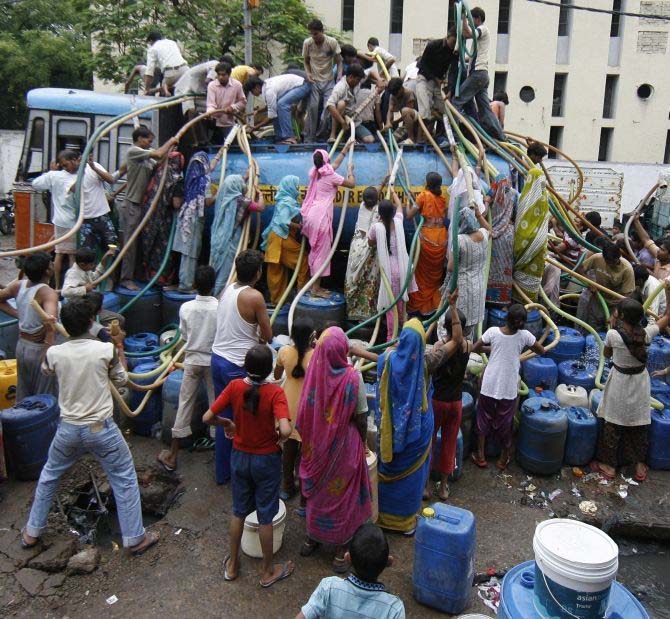In the heart of New Delhi, the Supreme Court emphasized the imperative of depoliticizing water allocation. It mandated the Haryana administration to enable the transfer of 137 cusecs of surplus water, discharged by Himachal Pradesh, to alleviate the water scarcity in the capital.
A panel comprising Justices Prashant Kumar Mishra and K V Viswanathan articulated, “During the period spanning March to June, Himachal Pradesh harbors a surplus of 137 cusecs of water. Given Himachal Pradesh’s compliance and readiness to relinquish its surplus, we instruct the state to discharge 137 cusecs of this excess from the upstream to ensure its passage through Hathinkund barrage (located in Haryana) and onward to Delhi via Wazirabad.”
The panel further stipulated, “Upon prior notification from Himachal Pradesh, Haryana is tasked with facilitating the smooth flow of surplus water to Hathnikund and thereafter to Wazirabad barrage, thereby ensuring uninterrupted supply to Delhi’s populace for consumption. It is imperative that the Delhi government minimizes water wastage.”
Underlining their cognizance of Delhi’s acute water scarcity, the panel asserted, “Water allocation should transcend political agendas.” Urgency punctuated their directives, as they urged Himachal Pradesh to commence water release the following day, with prior intimation to Haryana. The Upper Yamuna River Board (UYRB) is tasked with gauging the excess water received at Hathnikund barrage for onward transmission to Wazirabad barrage and Delhi.
A status report is mandated to be presented on Monday, with all involved parties, including the petitioner Delhi government and respondents Haryana and Himachal Pradesh, required to file compliance affidavits by the same deadline.
During proceedings, the panel queried the Haryana government’s stance, questioning the rationale behind its objection to Himachal Pradesh’s water release. Senior advocate A M Singhvi, representing the Delhi government, highlighted the lack of objections from Himachal Pradesh and the absence of a response from Haryana despite solicitations. The panel underscored the severity of Delhi’s water crisis, branding it an existential threat.
Addressing the Haryana government, the panel urged cooperation, emphasizing the urgency of the situation. Singhvi reiterated his client’s plea for one month of surplus water to alleviate the crisis, decrying Haryana’s objection.
The Haryana government contended the challenges in measuring and apportioning surplus water, arguing the absence of surplus water in Himachal Pradesh.
The panel urged pragmatism, emphasizing the gravity of the issue. Justice Viswanathan proposed a pragmatic solution, urging Haryana to grant passage for water transit, considering Delhi’s dire need.
While acknowledging Haryana’s water requirements, Justice Viswanathan underscored the severity of Delhi’s crisis, emphasizing the absence of evidence indicating a graver situation in Haryana.
On June 3, the Supreme Court reiterated its commitment to addressing Delhi’s water supply woes amid the prevailing heatwave, urging stakeholders to convene. This directive came in response to the Delhi government’s plea for additional water supply from Himachal Pradesh via Haryana.
The plea, represented by water minister Atishi, highlighted the unprecedented demand for water amid soaring temperatures, characterizing it as a fundamental violation of human dignity and quality of life guaranteed under Article 21 of the Constitution.




